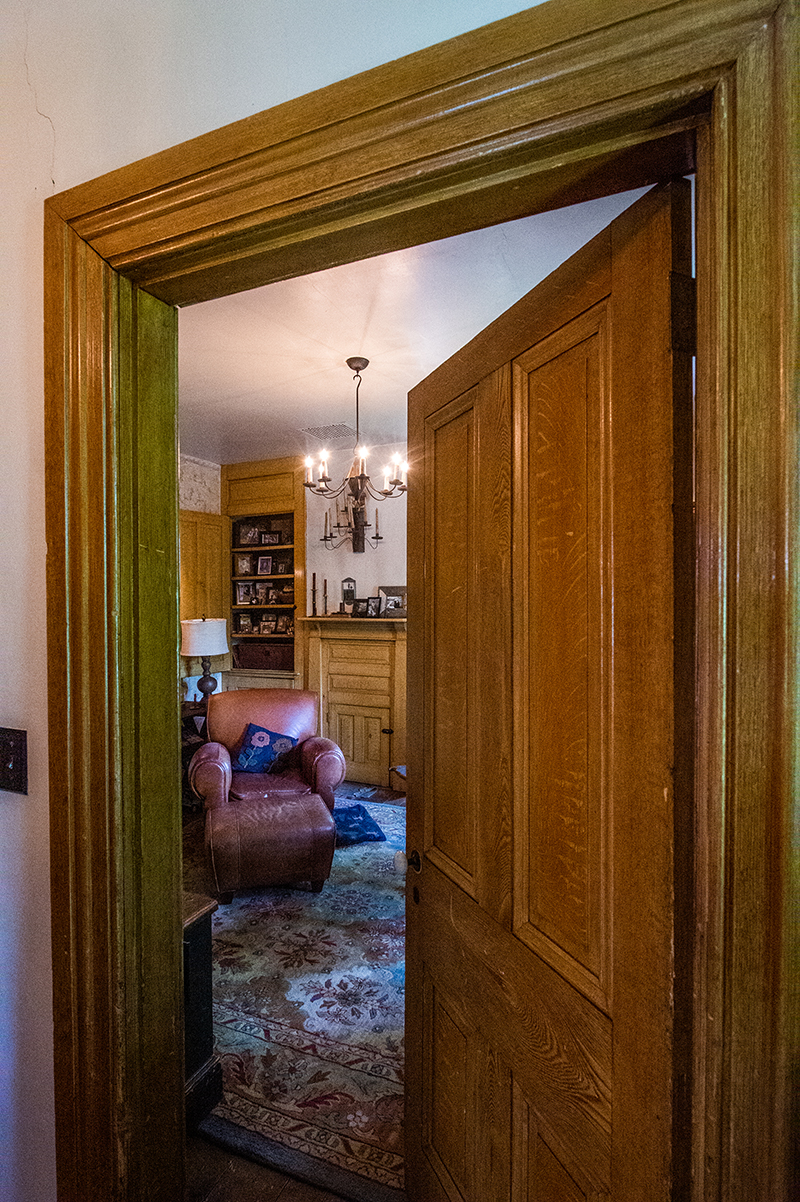
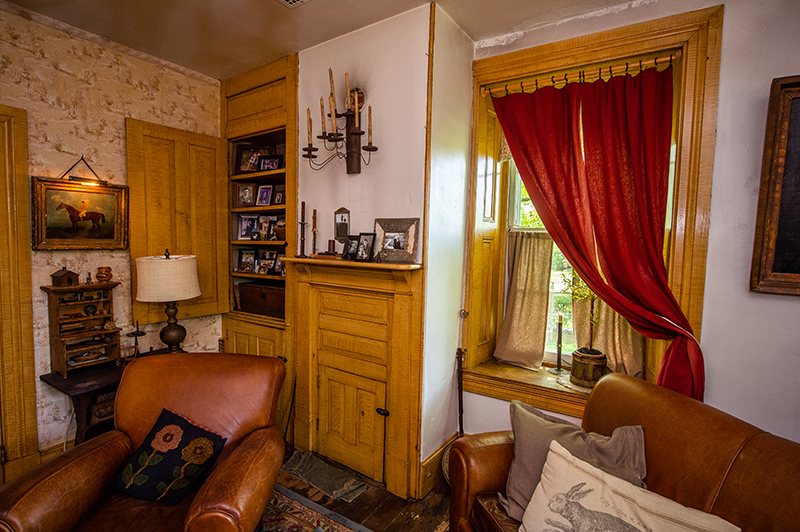
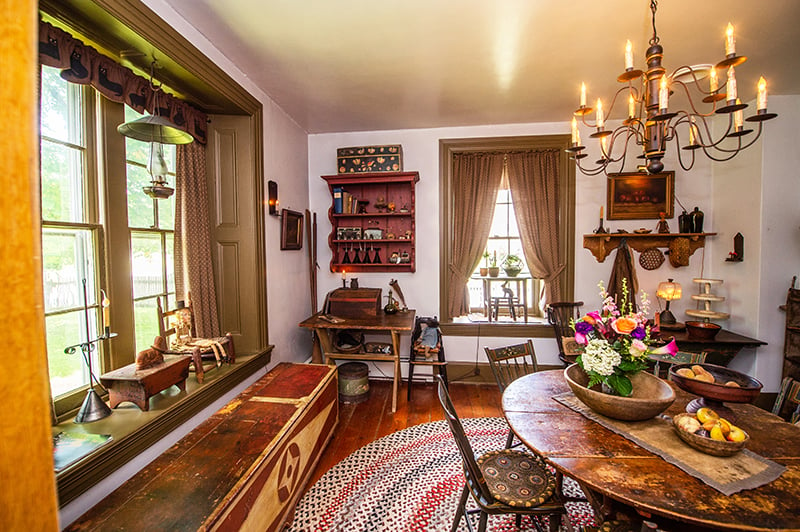
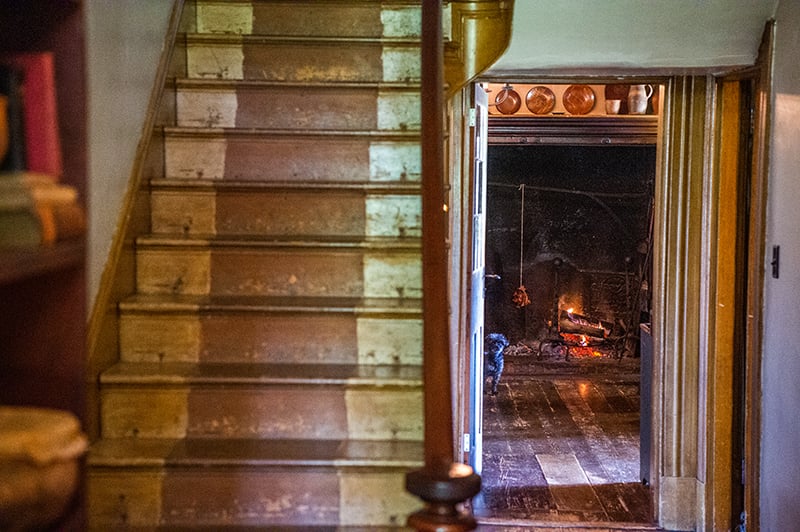
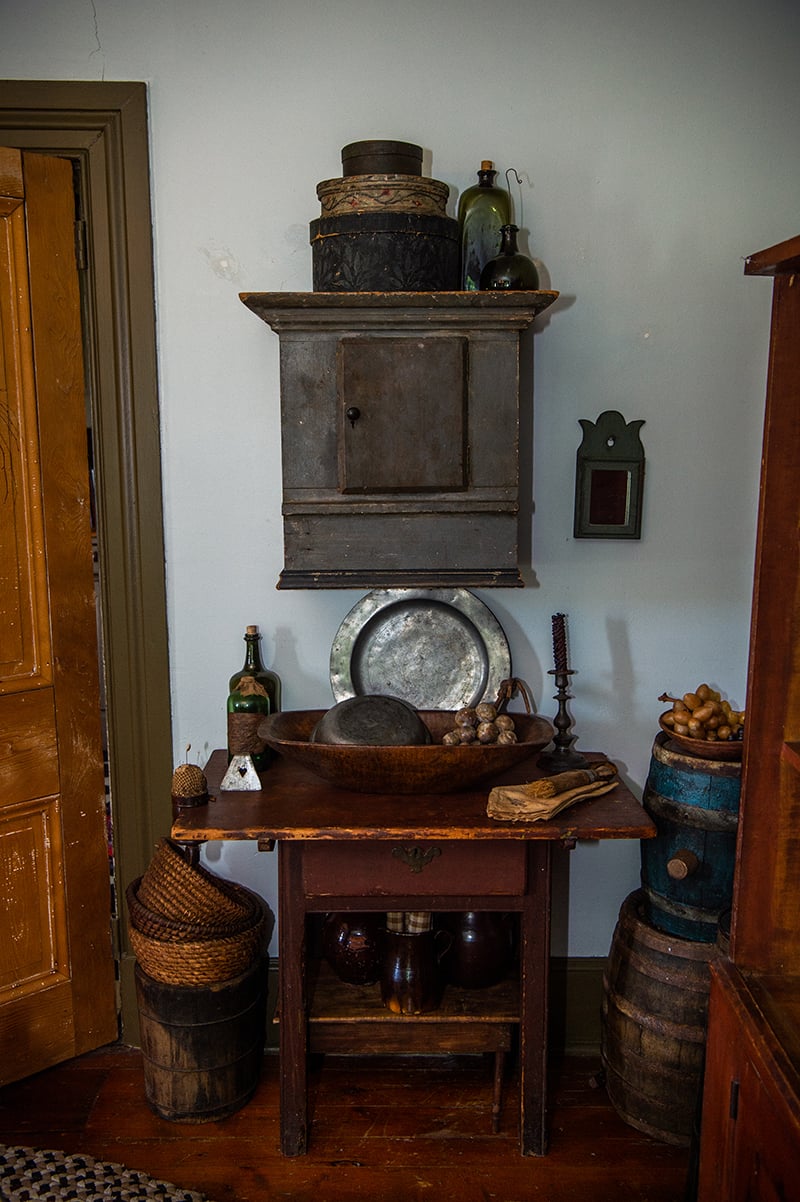
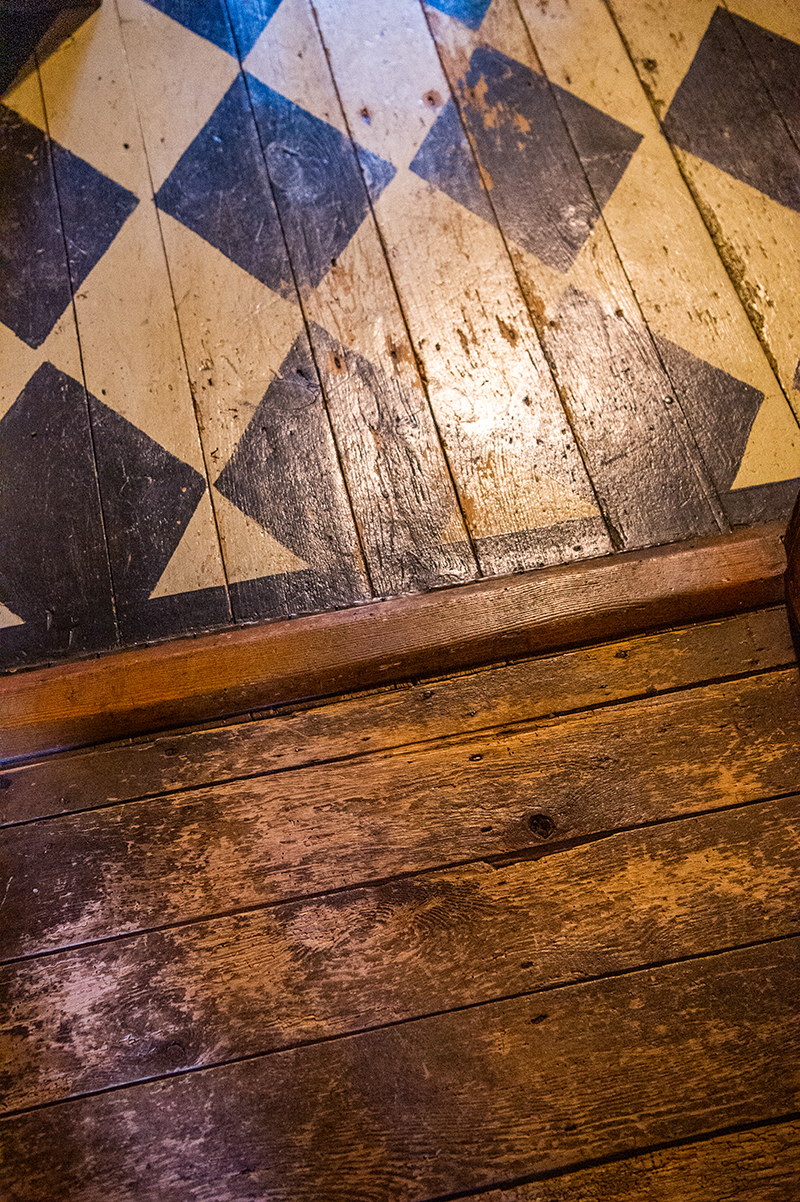
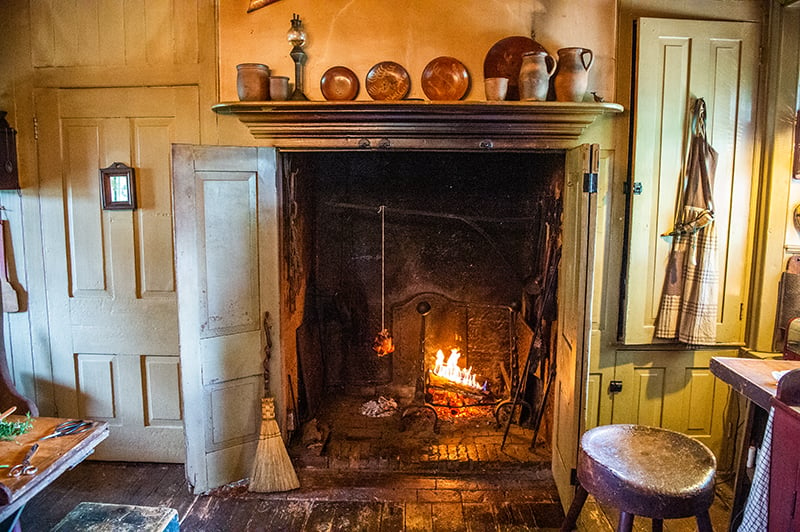
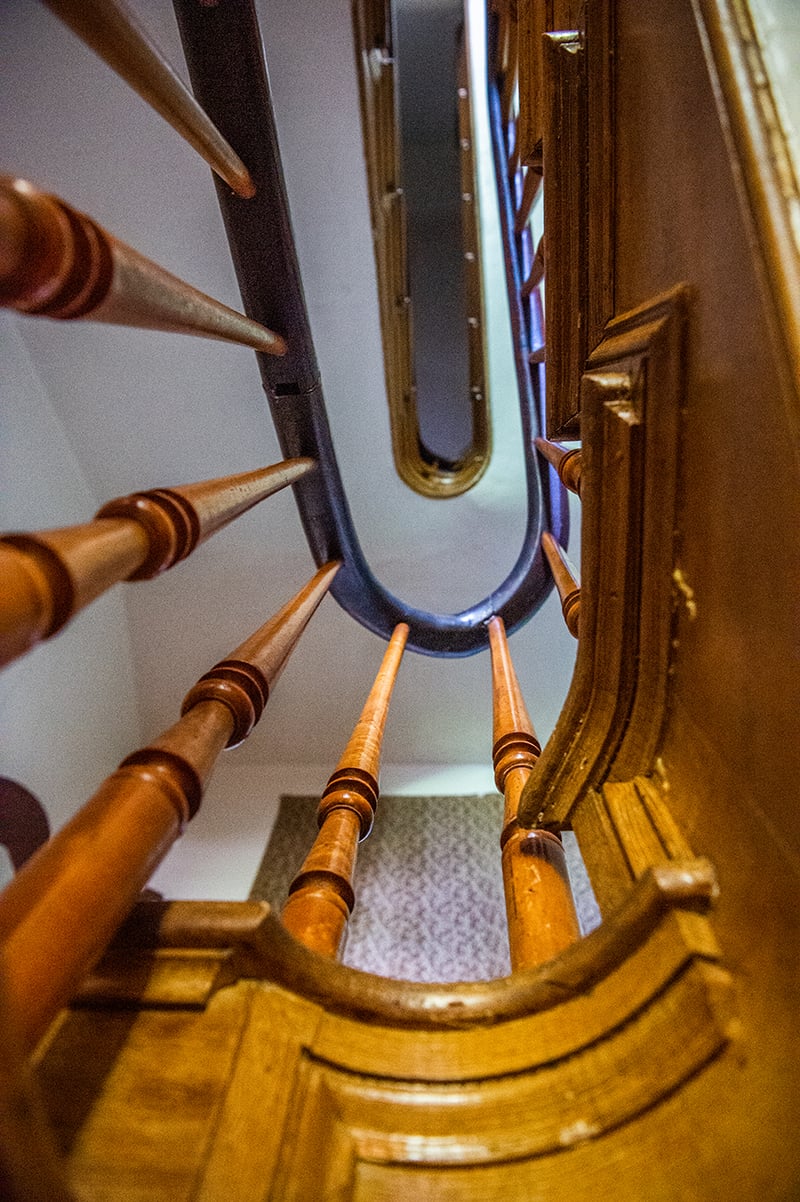
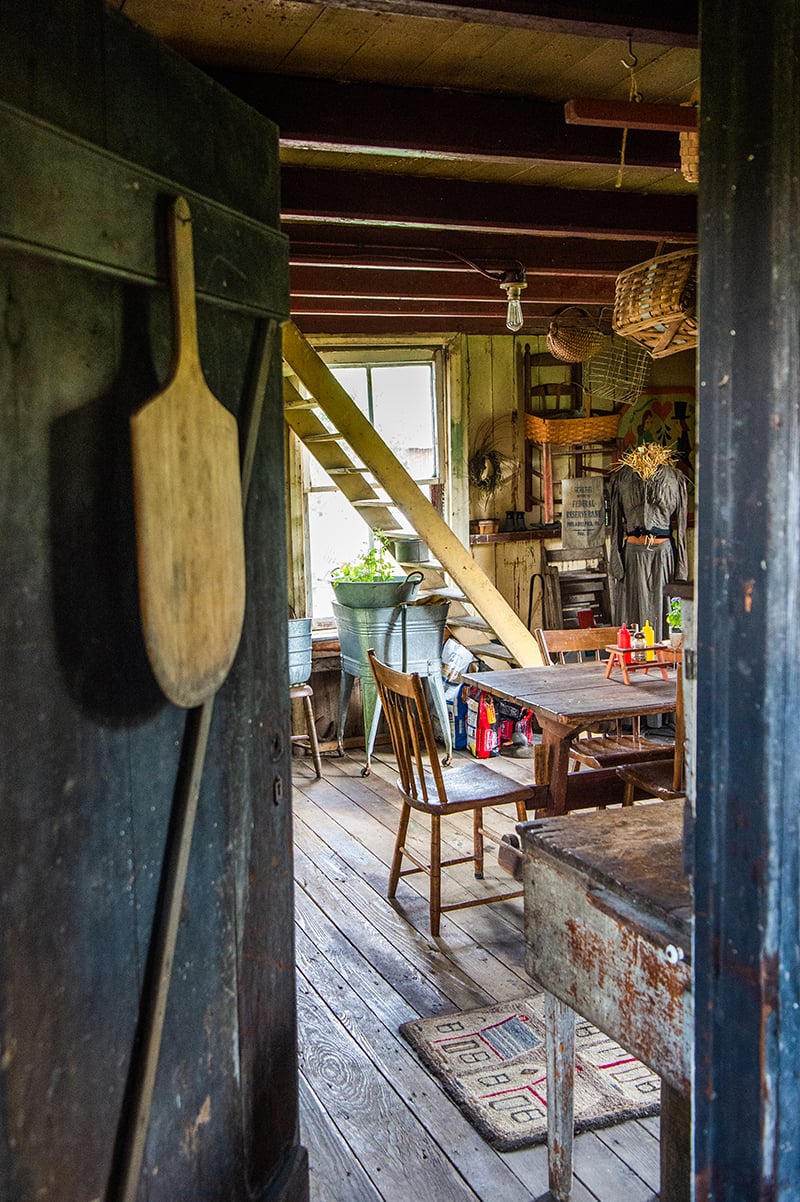
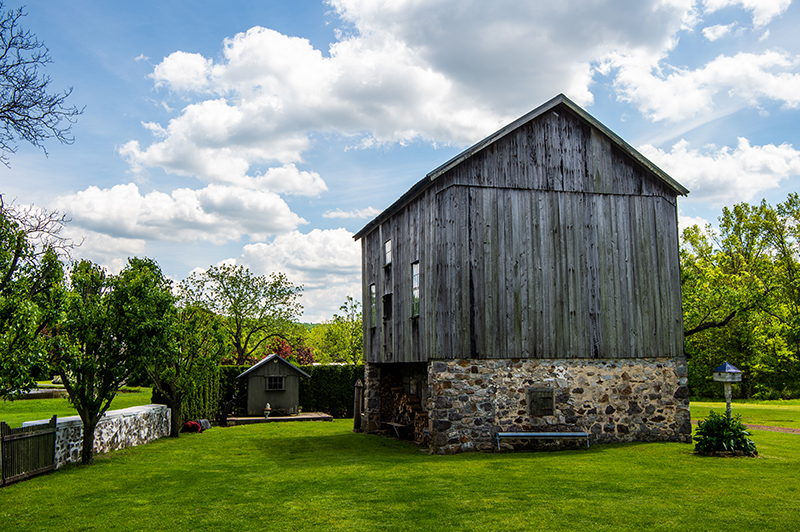
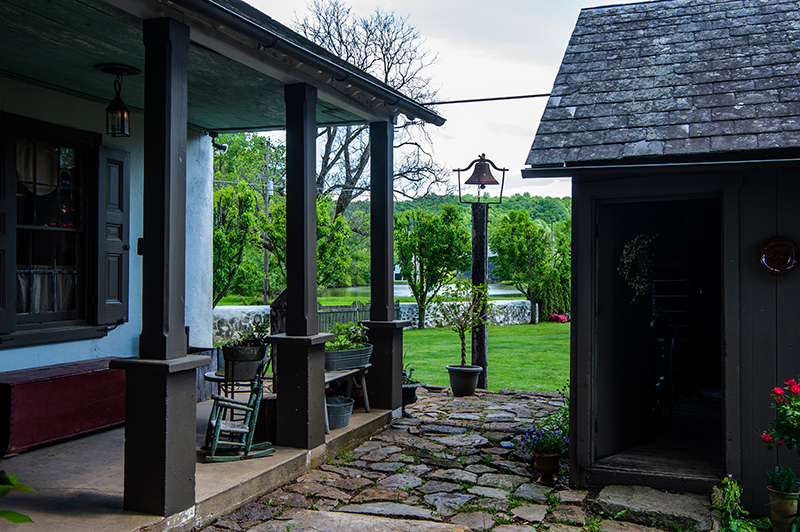
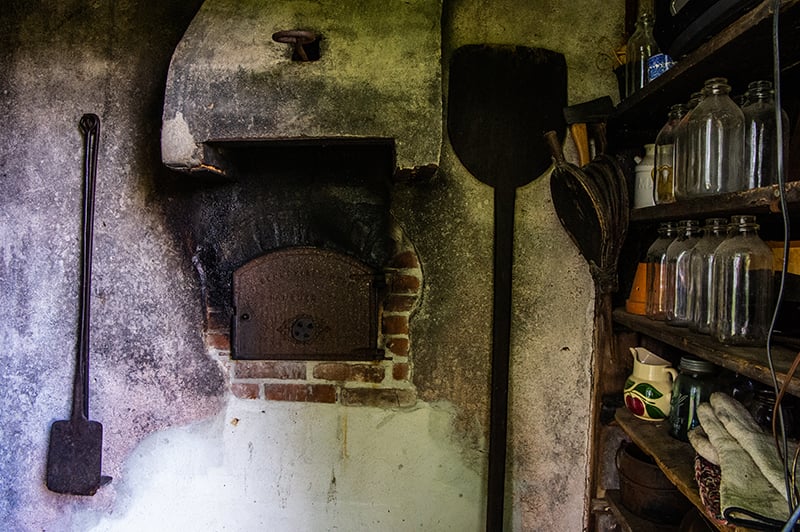

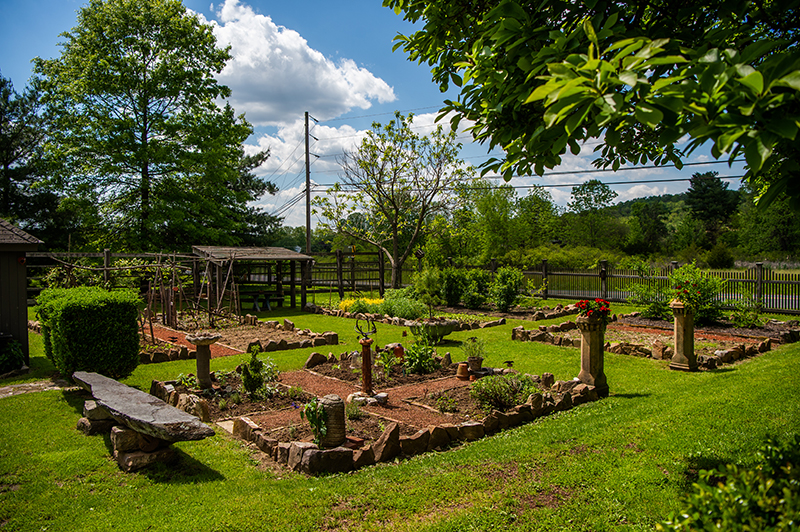
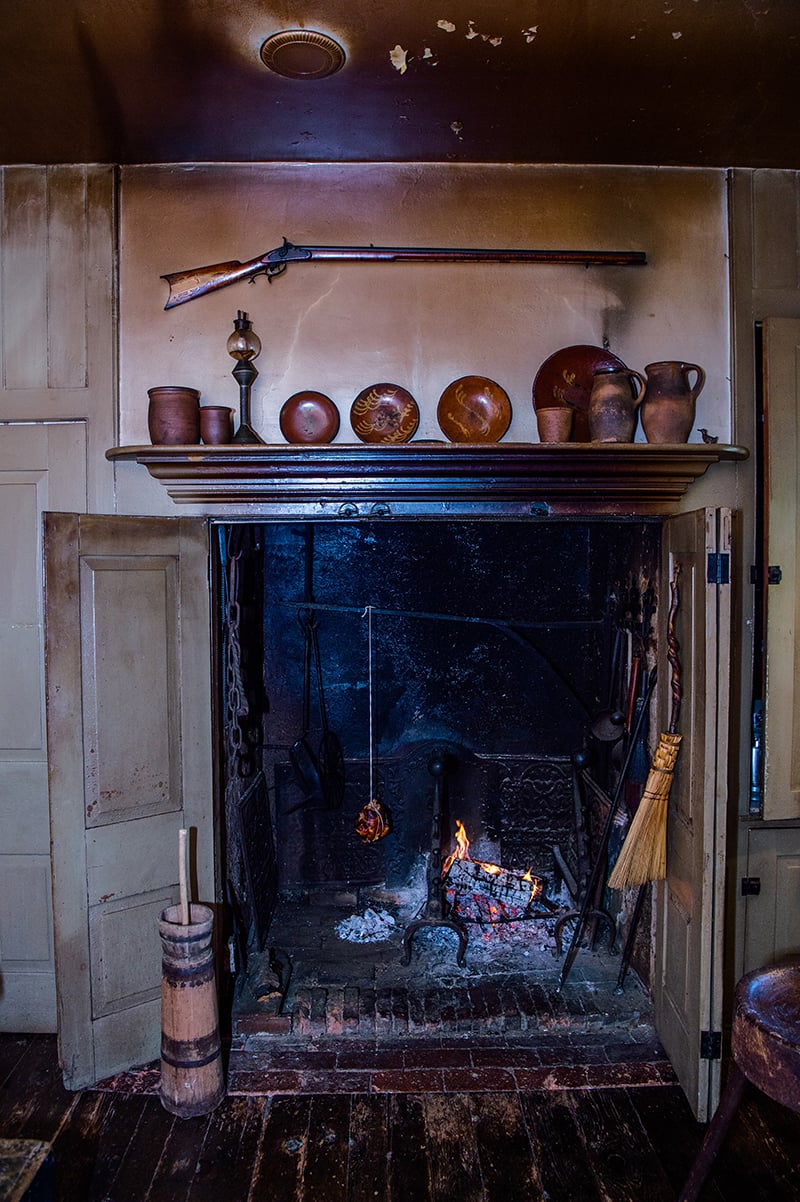
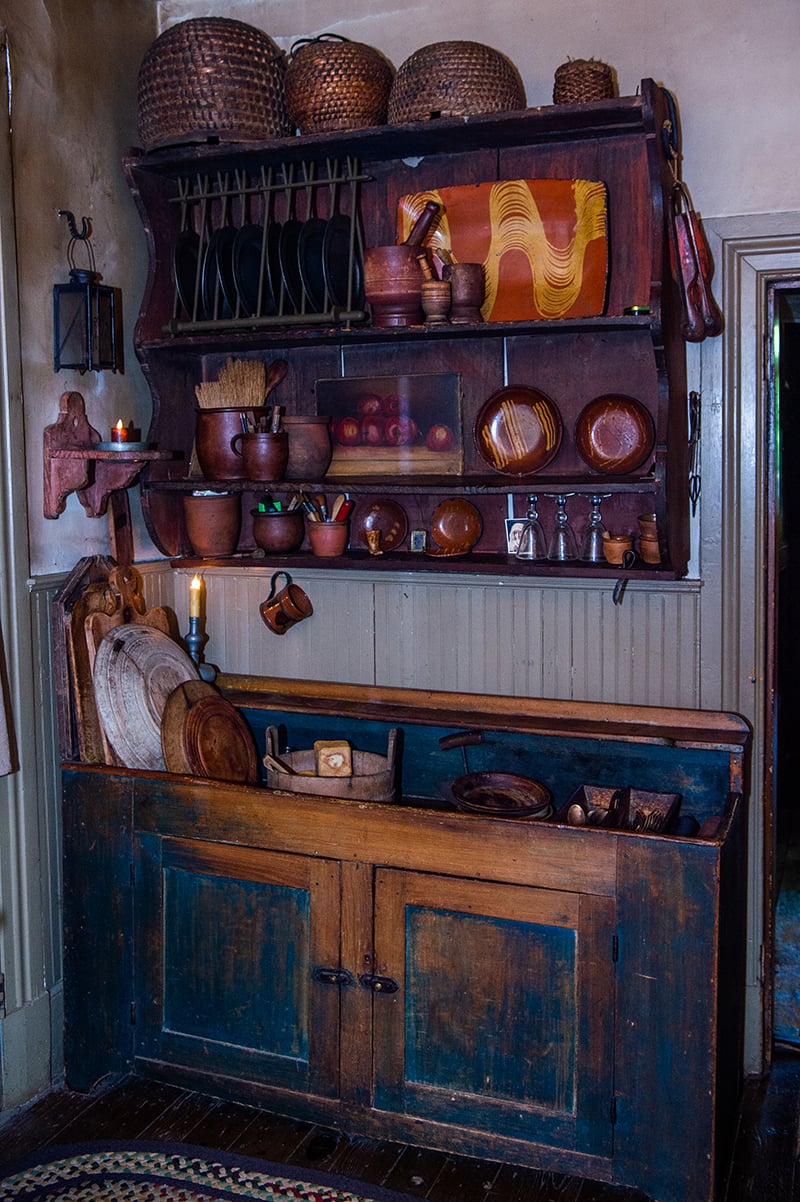

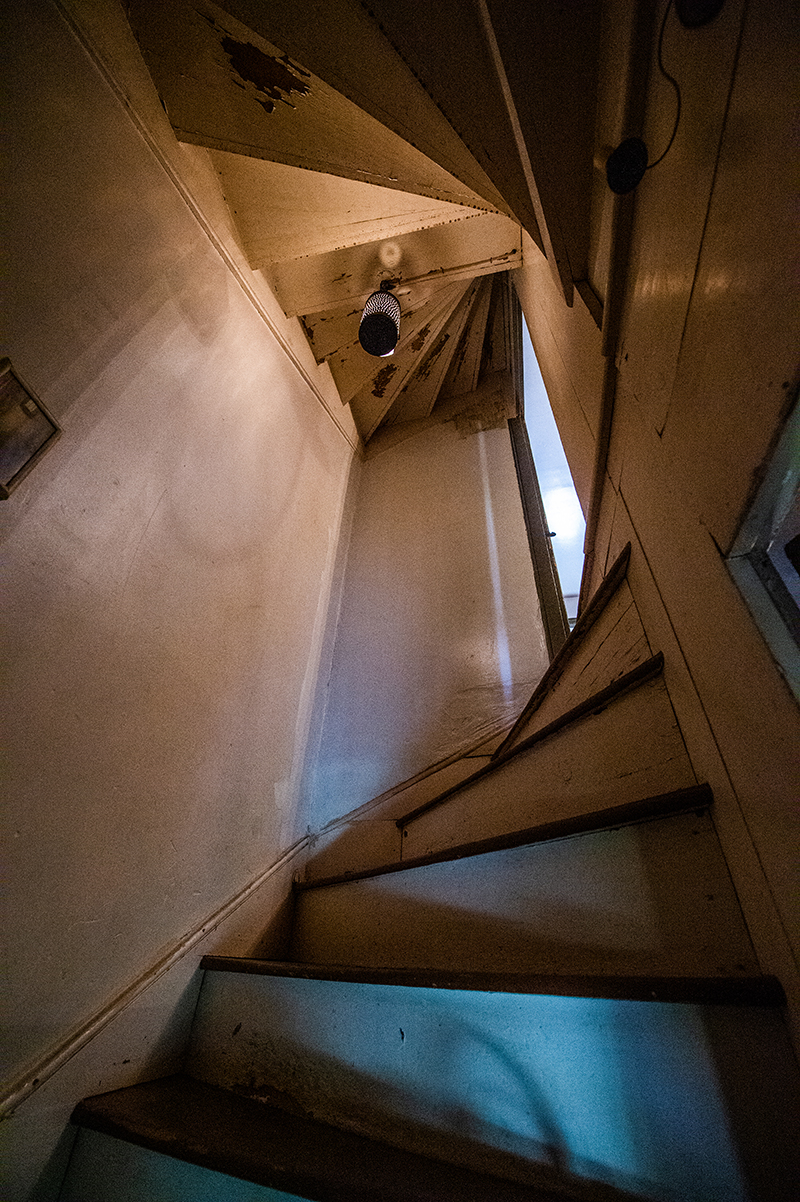
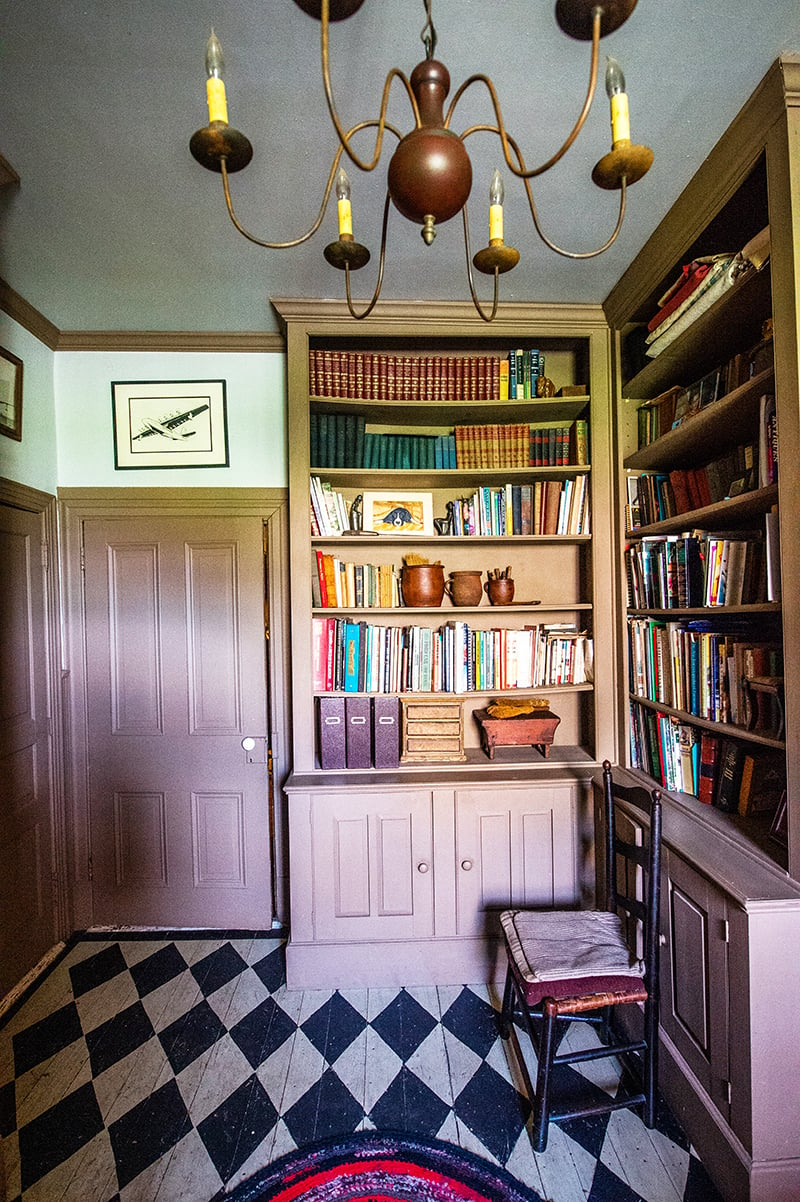
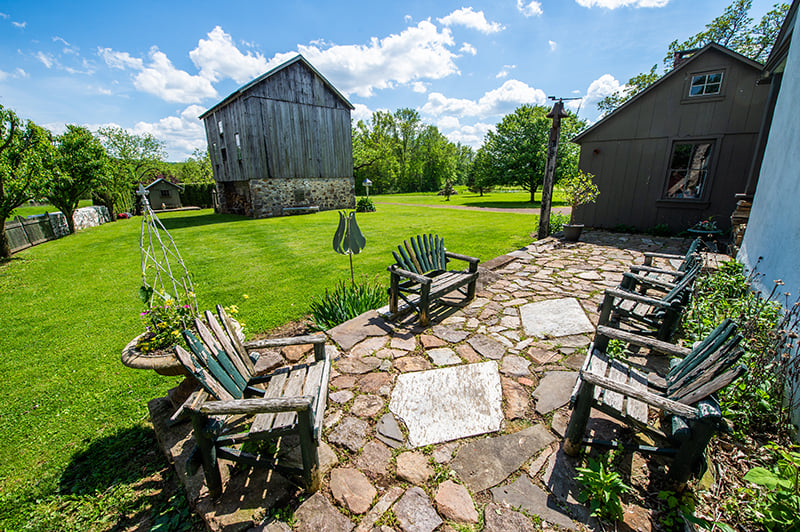
In The Merry Wives of Windsor, iconic playwright William Shakespeare coined the phrase “Why, then, the world’s my oyster…”
In contemporary terms, when the world is your oyster, things are upbeat, you can do what you like…your circumstances and your future are pretty fabulous.
Lynnette Phillips of Pike Township is living that kind of happy wife, happy life in her historic home located along the appropriately named Oysterdale Road.
“I seriously feel like I’m Cinderella sometimes,” she says, smiling broadly.
Indeed, after some bumps along life’s path, Lynnette is in a good place personally and professionally – and physically in a property she and her husband, Gary, have spent the last two decades lovingly restoring. And the happy home it’s become would likely make the road’s namesake Oyster family members feel pretty darn good.
The centerpiece of the Phillips’ 12 acres at the corner of Oysterdale and Marburger roads is the expansive, two-and-a-half-story, four-bedroom home, which has carefully and authentically been brought back to its early 19th century origins.
The area’s historical roots run deep. Located in the Oley Valley, a nearby home was erected by a member of the expansive Keim family who settled there in the 1700s. Lynette also offers anecdotal references to the Boone family, pointing to a nearby gristmill that she says was once operated by a best friend of Daniel Boone.
Love at First Sight
The decision to purchase the property was as serendipitous as it was almost instantaneous.
Lynnette’s then partner and now husband drove by it in 1998, saw the for-sale sign that had just been posted and was immediately smitten. He called the real estate agent and met him at a nearby John Deere dealership, where a sales agreement was signed on the hood of a Buick.
“The house was on the market for one hour,” she says. “Gary came home that one day and said, ‘I bought a house.’”
What would become the couple’s dream home was, initially at least, a nightmare to clean out and render habitable for the young blended family.
It took three months to remove the residue of past residents. There were some small treasures, though, in those items, including old books that now reside on the shelves of the period-style library the couple constructed, as well as a nameplate “N. H. Landis” placed above the doorway that leads from the attached summer kitchen to the main house.
Lynnette’s love of history and artifacts dates to her adolescence. At the age of 15, with some cash in hand, she ventured out to buy ice cream. A nearby public sale caught her attention. That ice cream money went instead to the purchase of an antique – maddeningly she does not recall what it was, but believes it may have been a vintage bottle – and from that moment she was hooked.
With Gary’s shared passion and talent for restoration, their home is a gem that pays tribute to its roots and the Oley Valley.
What’s Cooking
The attached summer kitchen, one of the first rooms completed, boasts an open hearth used for almost daily cooking. From a rotisserie fitted to roast chickens, to big pots for stews and soups, and even the necessary tool to make scrumptious grilled cheese sandwiches, the hearth is Lynette’s go-to oven. And a sizeable farm table can seat several diners who can enjoy the fire and warmth.
Bridging centuries and technology in that kitchen is a huge Garland gas stove, her husband’s pride and joy. Gary has owned the stove for years; indeed, it had been a fixture in his bachelor apartment above his Kutztown auto sales business. It may have also played a role in the couple’s romance.
“I said: ‘I’ll go out with you if you let me cook on your stove,’” she recalls. He did; she did, and that led to a cohabitation, followed by the purchase of the Oysterdale Road property, followed by a very unique wedding ceremony.
The couple took a trip out west to see Howard Hughes’ iconic, gigantic Spruce Goose airplane. After a stop on the California coast, where Gary proposed, the two bought a car and drove to McMinnville, OR, where the plane is on display.
Lynnette was determined to get married inside the Spruce Goose despite being told it was not possible. Over the course of 24 hours, which included happenstance encounters with the museum owner and a judge friend of his, the couple got their license. Lynnette found a dress and a seamstress to tailor it, gathered a simple bouquet of roses and Queen Anne’s Lace, and married Gary on July 9, 2001, inside Hughes’ plane of dreams. Coverage of the wedding was led by the Daily Oregonian and the Reading Eagle. The judge even helped arrange the couple’s honeymoon room at the Hotel Oregon in the shadow of Mount Hood.
Back in Pennsylvania, the pair continued to expand the living space in their home as well as tackle the exterior. They rebuildt the wood front porch complete with courting seats, cleared out the overgrown yard, created gardens, rehabbed the various outbuildings, and restored and repointed the small Marburger Road fieldstone wall.
Into the Woods
While marriage didn’t fence them in, Gary and Lynnette determined that the house and yard should be enclosed. The result is a 130-foot colonial-style natural wood fence built by Gary that appears virtually original. He dug all the post holes by hand and then installed locust posts for their durability to weather, soil, and insects. The fence stakes are all California or Oregon cedar. All elements were sourced from Bailey’s Wood Products in New Tripoli.
The interior woodwork was pretty much intact, although in need of some painting, refinishing and repair. The wide-planked floors, naturally distressed through nearly two centuries of wear, are the same yellow pine used in much of the original house construction. In many rooms, the floors are left natural or painted a muted brown. In the small library, Lynnette created a black-and-cream diamond pattern.
The dominant woodwork color in the dining room, as in some other rooms, is “tree-trunk brown.” Like the “oyster brown” paint on the reconstructed porch, Lynnette created the colors to keep them period authentic, yet unique to the house.
The antiques aficionado side of Lynnette was as dedicated to collecting as she was to the restoration work. And her passion shows with every step taken through the big, bright structure that’s served a variety of uses in its lifetime – from a charming summer house for a Germantown family to a flophouse of sorts in parts of the last half of the 20th century.
Though collectables abound, there is no sense of clutter.
“Simplicity is my favorite word,” says Lynnette.
Tales to Tell
Indeed, each room seems to offer its own vignette setting, with a story supplied by Lynnette.
In the dining room, the old oval table is complemented by century-old, hand-painted chairs. A much earlier Cox chair, circa 1765-1782, an original version of a Windsor chair, is stationed by the window.
“That chair really has a connection to others in Mount Vernon,” she says.
To the far corner is a “tavern nook” featuring a circa 1720s tavern table, vintage water and wine barrels, and butter churn. Part of her redware collection sits on the bottom shelf. Stone fruit, grapes in this case, lie in a big wooden bowl on the top and a large pewter platter leans against the wall under a painted cabinet.
Across the room is a large wood chest, painted in traditional Pennsylvania German colors with a star motif. Its capacity for storage, which in many old homes is lacking, is well appreciated by the couple.
Across the large center hall is the living room. A big leather chair and sofa provide contemporary comfort to watch television and relax. A small, almost overlooked fireplace offers needed heat in the cooler months.
It’s always Christmas when one peers inside a small corner cupboard. The cherished mementoes of the season remain on display to remind the couple of the happy holiday gatherings of their grown children and grandchildren.
Two paintings in this room are among Lynnette’s favorites. A small oil depicts what Lynnette believes to be an early Kentucky Derby winner. Across the room is what may be a late 18th-century oil portrait of a seemingly refined red-haired gentleman. Provenance being uncertain, the fellow has been “adopted” by the family and has been renamed “Sir James Phillips.”
“He’s a part of us now,” Lynnette laughs.
Bath Time
Space, on the first and second floors, was carved out for bathrooms. The downstairs washroom, off the side porch and garden, doubles as a mud room. Tastefully tucked away are the washer and dryer, and vintage cloth curtains shield a modern shower.
Upstairs the sizeable main bathroom is a haven. In season, a magnolia tree lends its soft scent. A sizeable antique corner cupboard that serves as a linen closet required the removal (and then replacement) of a window to install.
The three-story main staircase is actually an open stairway. Though not as grand as one might envision many open stairs, there is a clear line of vision from the first through third floors.
Outdoor Treasures
The property includes a few outbuildings, the most utilized being a separate summer kitchen just steps along a stone pathway from the main house. Furnished and accessorized with collectables, the structure includes a walk-in arched fireplace and an original bread oven that now mostly serves as a pizza oven.
“The temperature in there can reach 500 degrees, and a pizza is done in three minutes,” Lynnette says.
The stone pathways leading to the garden were happy discoveries by Lynnette as she cleared the once-overgrown yard.
The Phillips created a four-section garden, what she terms as a typical German garden, with herbs grown closest to the kitchen door. Two ornate old chimney stacks, made in Germany and discovered by the couple in the barn, stand sentinel at the garden’s entrance, their tops bursting with colorful flowers. Each section is subdivided into four areas by gravel paths. Over the years, a variety of vegetables and flowers have also been featured. At one point, Lynnette, whose creativity has been the inspiration for the garden’s specific palette, grew some 700 zinnias. Lavender is also a staple. Lynnette takes special pleasure in gifting bouquets of her flowers to family, friends and clients.
An English boxwood in the garden, manicured into a chicken-shaped topiary, pays tribute to a flock of hens who fell victim to a persistent fox. Two more formal, traditional topiaries flank the front porch.
A huge stone slab balanced on rectangular field stones provides a place to sit and contemplate, as does a pergola, once covered with a grapevine since devastated by the spotted lanternfly invasion.
“I like to sit here at night and hear the owls in the walnut tree,” Lynnette says. “We have great horned and barn owls.”
Just beyond the garden is a grove of evergreens, each one of which had its start as the family Christmas tree, the most recent named after grandson Dalton, who takes obvious pride in it when he visits his grandparents.
Lynnette says that despite 21 years at the property, there is always more work to do, more improvements to be made. But just as she says her day job as a home care specialist — helping seniors with health issues to stay in their homes — is a passion more than just an occupation, the chores of restoration are really joys for her.
She believes her house and property, steeped as they are in years gone by, help temper the all-too-fast pace of daily life.
“Life has become a technology of the Internet and other corresponding links to the lack of time encouraged to digest the process and reflect on life,” she writes in a statement she requested be included in this article. “I really like living and breathing the country life. Centuries ago we didn’t have cell phones or computers; we were communicating with one another, and families seemed to be more engaged in interacting with family and friends. We should – everyone – every once in a while take a step back and live life to the fullest. Hug someone; take a walk, and enjoy nature and life.”
Practicing what she preaches, Lynnette is doing just that on Oysterdale Road.
















